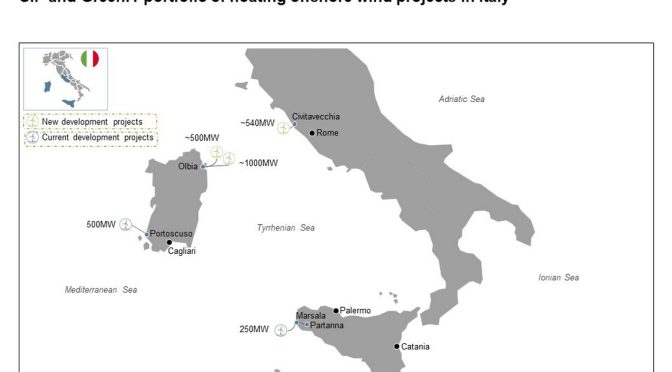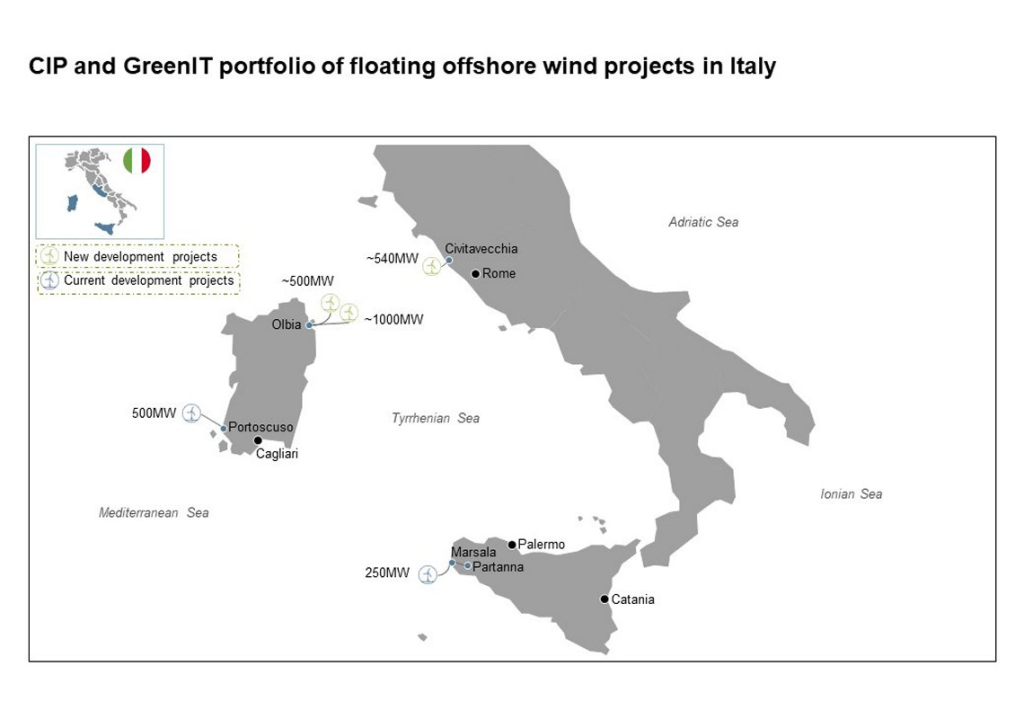
The partnership strengthens its commitment to the Italian offshore wind floating industry with three new projects located approximately 30 km off the coasts of Latium and Sardinia The three wind farms make the consortium one of the largest developers in the sector in Italy, with a pipeline totaling almost 3 GW, enough to satisfy the electricity consumption of around 2,5 million households
Rome/Milan/Copenhagen, 22 March 2023 – GreenIT, the Italian renewable energy joint venture between Plenitude (Eni) and CDP Equity (CDP Group), and Copenhagen Infrastructure Partners (CIP) through its Flagship Funds have signed an agreement to develop three floating offshore wind projects in Latium and Sardinia. The plants will be located on average roughly 30 km off from the coast and have an overall capacity of approximately 2 GW.
The agreement involves the development of a project in Latium, off the coast of Civitavecchia, for a total capacity up to 540 MW and two other wind farms located off the coast of Olbia (Sardinia), with a power of around 500 MW and 1,000 MW. Combined the three projects will produce around 5 TWh/year with commercial operation expected between 2028-2031 once the authorization process and subsequent construction phase are completed.
The partnership’s offshore wind portfolio in Italy will thus reach almost 3 GW with a yearly production of around 7 TWh of renewable energy, enough to satisfy the electricity consumption of around 2,5 million households[1] and contributing to the decarbonization objectives of the 2030 National Integrated Energy and Climate Plan.
The three offshore projects will be using floating foundations, utilizing innovative technical solutions aimed at minimizing environmental and visual impact and will benefit from technological and logistic synergies with the other offshore wind initiatives managed within the same partnership.

This new agreement represents an additional strategic step and a firm commitment to strengthening the floating offshore wind industry in Italy, providing a significant contribution towards a low carbon future as well as encouraging the development of the local supply chain.
[1] Calculation referred to “Typical domestic consumer with annual consumption of 2,000 kWh and power of 3 kW” as reported by Arera in his Annual Report 2021.